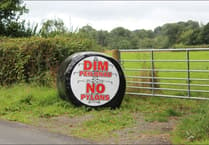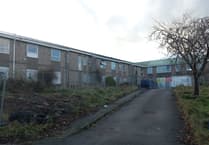What can the past tell us about the present and the future? Maybe quite a lot. So if you haven’t yet seen the “Idyll and Industry” exhibition at the National Library of Wales, you have just a few days (until 7 September) to visit. Centred around a Canaletto masterpiece, on loan from The National Gallery, this is an evocative and thought provoking display of paintings of Wales (the Canaletto excepted).
How does the Canaletto (The Stonemason’s Yard, Venice, 1725) tie in? Well it was one of many works of art evacuated to Wales during the 1939-45 World War, for safe keeping in the old slate mines. There are some brilliant photos of Great Western Railway trucks, making their way over remote Welsh mountain roads, carrying priceless artworks covered in tarpaulin, and then disappearing into the old mines.
Canaletto is famous for his romantic Venetian views, but the Stonemason’s Yard reminds us that beautiful buildings require industry and hard graft, people to do the work and others to support them. The detail in the painting is remarkable; almost like a high resolution photograph.
The other pictures capture images of Wales; the rural beauty but also the old industry and post-industrial landscapes. They remind us of humans’ interaction with our environment. We don’t just live in it, but we actually shape it. Penry Williams’ “South Wales Industrial Landscape”, c1825 is particularly striking.
There are pictures of Aberdulais Mill near Neath, including a Turner watercolour from 1796. This was one of the birthplaces of The Industrial Revolution in Wales (and the world). The natural power of water, coal, timber and ore were combined under the direction of a German engineer to smelt copper way back in the 1580s. It led to the foundation of a metal industry that Wales came to dominate in the Nineteenth Century.
We see evidence of this close to home; indeed “The secrets of the lost mines of Wales” in last week’s Cambrian News reminded us that once upon a time Ceredigion (and West Wales) was industrialised. Our beautiful rural landscape has an interesting and slightly dark past, with men, children and ponies working deep underground in a horrible and dangerous environment.
The “Coach Road” up through Cwmystwyth, the Elan Valley and over to Rhayder is one of the world’s most beautiful drives. The old hydro plant between Abermagwr and New Row, that used to power the lead mine, must have been state of the art technology. The waste heaps have only just started showing signs of vegetation in the last few years; too toxic for even grass to grow for over a century. The rows of miners’ cottages in villages like New Row, Pontrhydygroes and Cwmystwyth remind us of the human involvement. The bleak old mines up above Cwymstwyth could be straight out of a Tolkien novel. Next comes a modern hydro plant and then finally a view of wind turbines, striding into the beautiful Welsh distance.
In the near future, we will be driving this road in electric cars. Perhaps we will feel slightly smug at our journey from exploitation and pollution to post-industrial “green” energy? And yet...
How many tons of earth have to be shifted to extract the rare earth metals required to make this technology work? What’s the carbon footprint involved? Where is it being mined? What is the impact on the local environment? Is the spoil as toxic as the old Welsh lead mines? Who is doing the work? Is it being done in safety? Is it fairly paid? Are children being exploited? Out of sight, out of mind as they say.
Sir Keir Starmer and Eluned Morgan were clearly surprised by the size of the turbines at the Brechfa windfarm. Some of the proposed turbines are almost double the size. Leaving aside the aesthetic impact and obvious trauma to birds, are we really certain that they have no environmental impact? It’s said that a leaf falling in the Amazon rain forest can cause a hurricane. And what’s the cost of the backup for when the wind doesn’t blow? Or maybe the lights just go out!
How will our descendants look back on us in this post-industrial age? “Well-meaning muppets” comes to mind. With Ed Miliband in charge of Energy Security, surely nothing can go wrong!
Diolch yn fawr to everyone involved with Delfryd a Diwydiant at the National Library of Wales.





Comments
This article has no comments yet. Be the first to leave a comment.